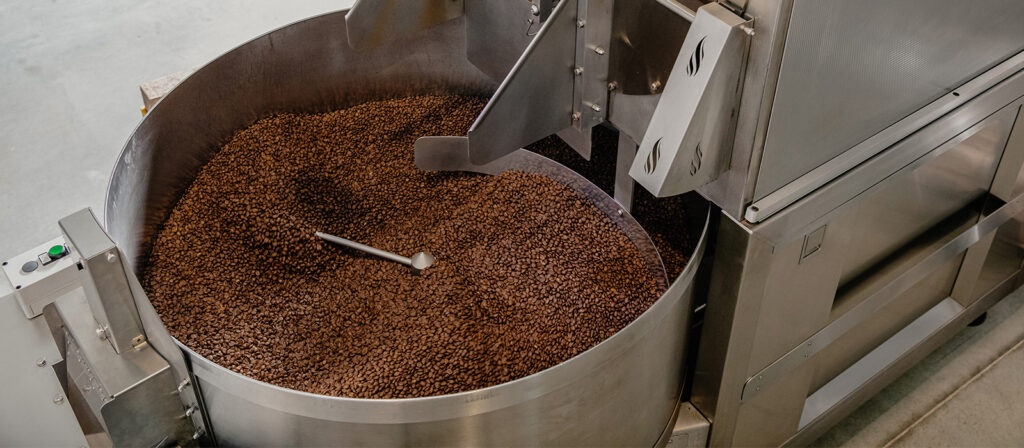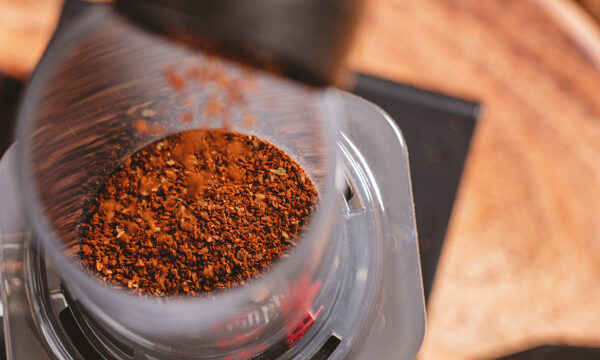
- Home
- What Affects the Taste of my Coffee?

What Affects the Taste of my Coffee?
Written by Julie
Reading time 4 minLet’s talk about what can influence the taste of your coffee. From harvest to coffee cup, everything can have an influence!
The Species and Varieties
Coffee comes from a plant that belongs to the Rubiaceae family, or more specifically the Coffea genus. There are 124 species of Coffea, including the well-known arabica and canephora. Each variety of this tasty plant has its own flavour.
Arabica is one of the richest tasting coffees. It is made up of more than 1000 aromatic molecules. This species grows in high altitudes, meaning that its cherries ripen slowly. In the final coffee this results in very light, fruity and floral aromas. The main varieties are Typica, Bourbon and Geisha.
Canephora grows at lower altitudes. This means that it develops more caffeine in order to protect it from its environment as caffeine is a natural insecticide. Therefore, its flavour is less developed. In the final coffee its main flavours are chocolate and nut. The main varieties of Canephora are Robusta, Nana and Conilon.
You may have noticed that arabica is a species whereas robusta is a variety. Years of commercialisation have led to an abuse of language. A fairer comparison would be between Arabica and Canephora.
In sum, if you are looking for a fruity and rich coffee then you should opt for an arabica. However, if you like a woody flavour then a blend of arabica/canephora will suit you best.
The Cultivation
Shade
The coffee tree, and the Coffea Arabica in particular, need protective shade in order for its fruit to ripen slowly and progressively. This means that the cherries ripen slowly, developing rich, delicate and refined aromas.
The coffee farmer looking for quality should correctly shade his plantation. However, the coffee farmer looking to cut costs shouldn’t shade his plantation so that the coffee cherries ripen quickly.
The Harvest
The harvest is a key moment because in the equatorial zone the seasons aren’t very distinct. In fact, a coffee tree can have several flowering periods in the same year. Even on the same tree, there can be cherries at different stages of ripeness. Selecting the cherries during the harvest is an important step because the stage of ripeness influences the taste profile of the coffee. A green cherry will be acidic whereas a cherry that is over-fermented will provide a fermented and unpleasant taste. There are two methods of harvesting the cherries:
- Stripping, which consists of harvesting all of the cherries in a single round, either by hand or using equipment. This is an economic method but because it is non-selective it gives a mixed result which directly impacts the taste of the final coffee.
- Picking, which consists of selecting only the cherries that are optimally ripe. This method is costly because it requires several rounds per coffee tree and per harvest, but it brings a real guarantee of quality to the coffee.
Processing
Processing is the stage that allows you to separate the green beans from the cherry pulp. There are two main processing methods:
- The washed method, which gives the aromatic coffees subtle, delicious and refined notes.
- The natural method, which gives the coffee a fuller body, a more developed sweetness and fruity notes.
There are many other processing methods which give different flavour results.
The Preparation
Just like wineries, coffee plantations have several grades, or batches, of green coffee. Grading and sorting them makes it possible to create these batches. Grading makes it possible to create batches of the same size for good roasting control.
Blending
Just like a winemaker can choose to blend a merlot with a cabernet franc and a petit verdot, the art of roasting involves creating blends with an aromatic balance. This is called a blend or a mix. The roaster can decided to create a mix of arabica/canepora in order to find a balance between acidity and bitterness.
Roasting
Roasting is simply cooking the green coffee. There are several degrees of roasting: very light, light, medium, dark and very dark. Every colour has a different impact on the taste of the coffee and also on the aromatic notes.
If you would like to find out more about the roasting colours, we suggest that you read the article “How to choose the roast colour of my coffee”.
Also, the freshness of the roast is very important. The fresher the roast the richer the aroma.
You also play a role in the taste of your coffee. It’s up to you to experiment and be creative in order to find the recipe that suits your taste buds! But how do you do it? Rest assured that MaxiCoffee is here to help you find your ideal coffee!
Discover all of our articles


